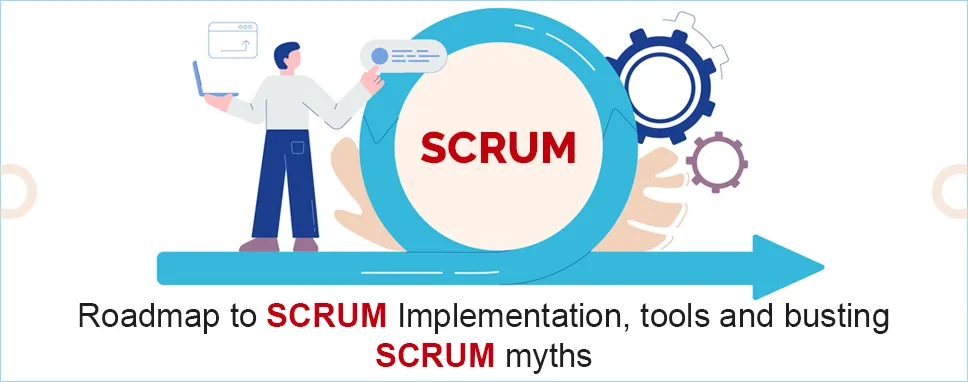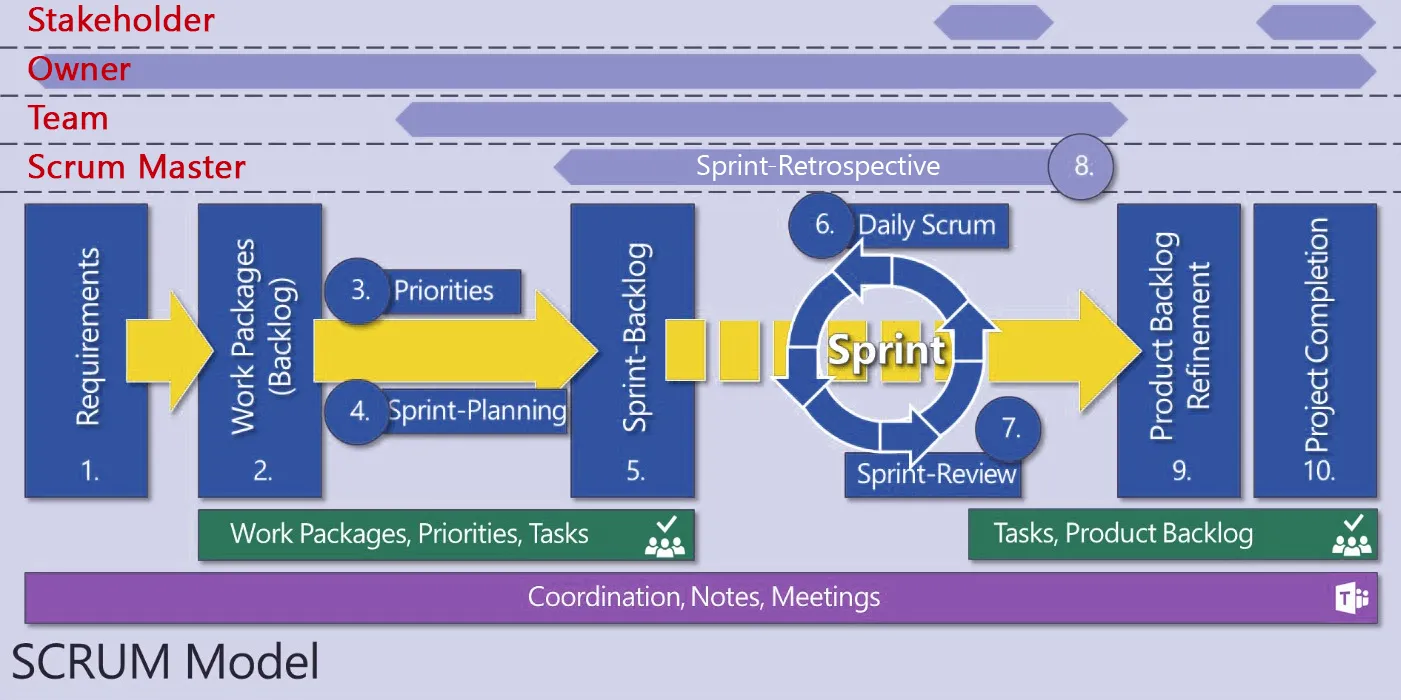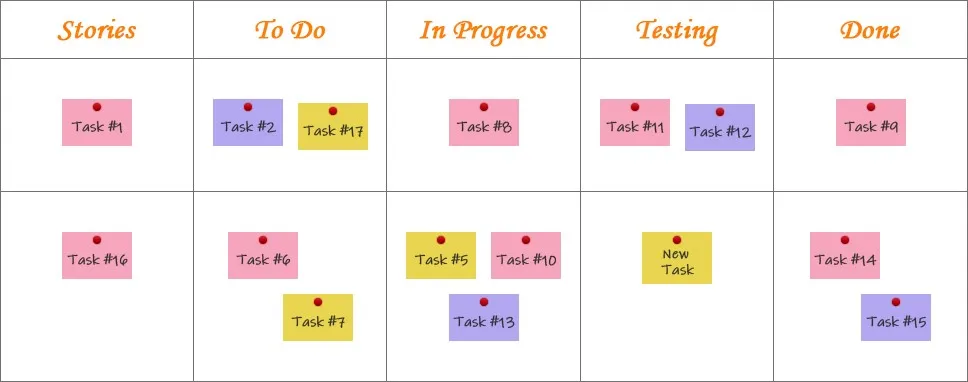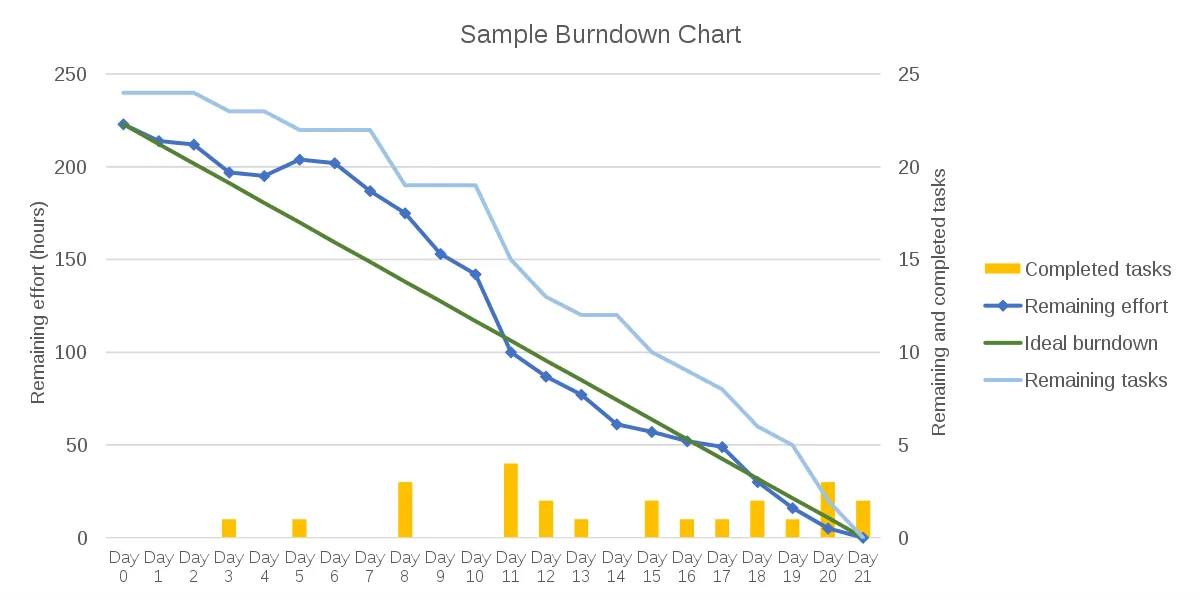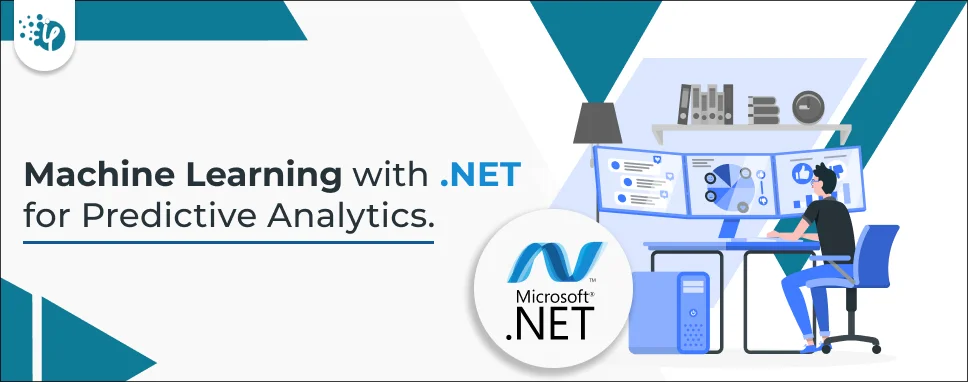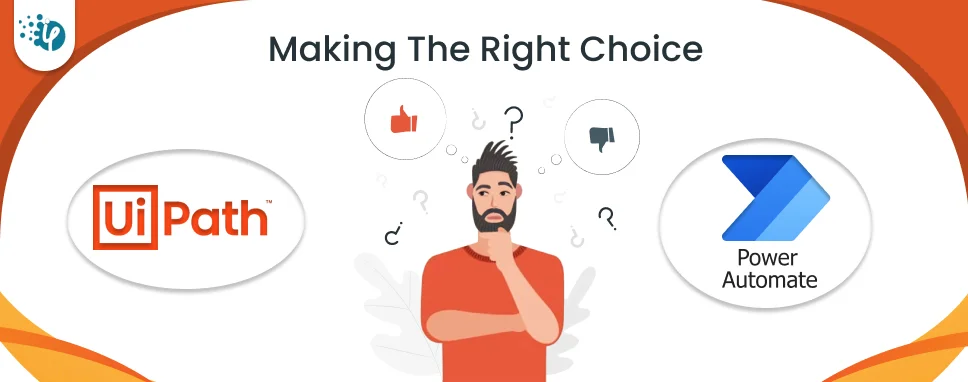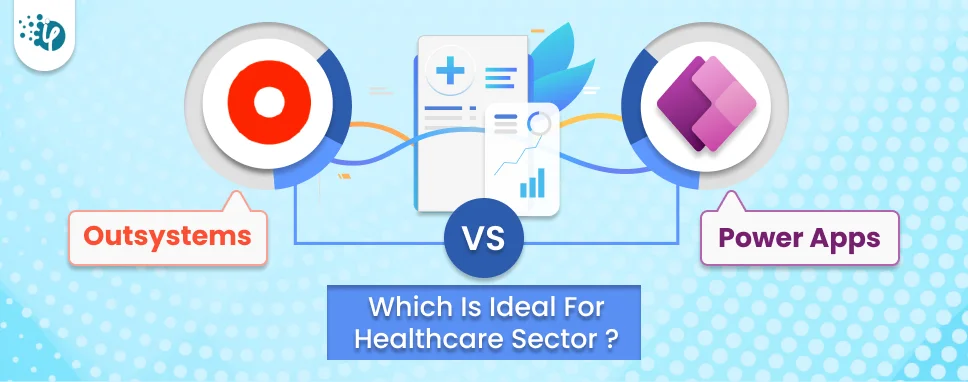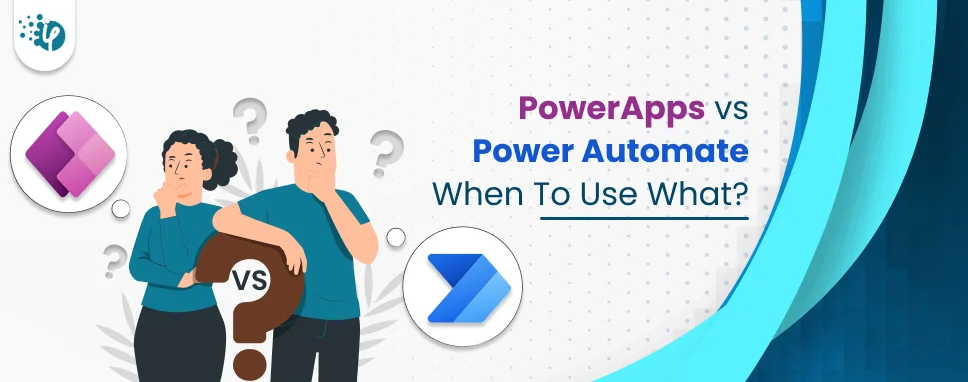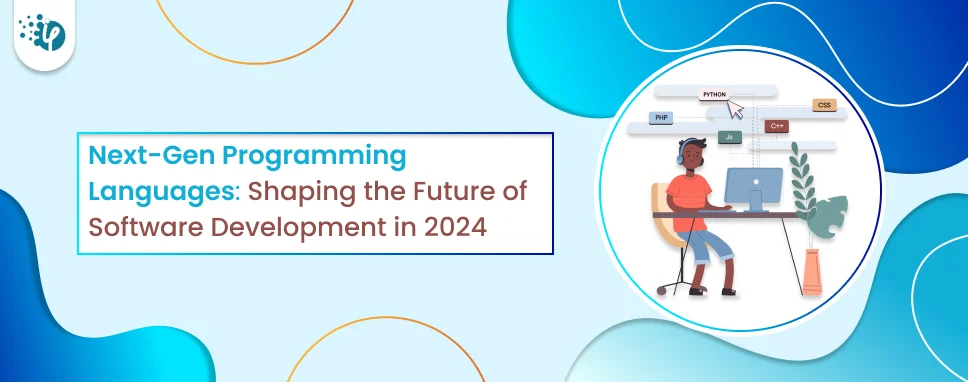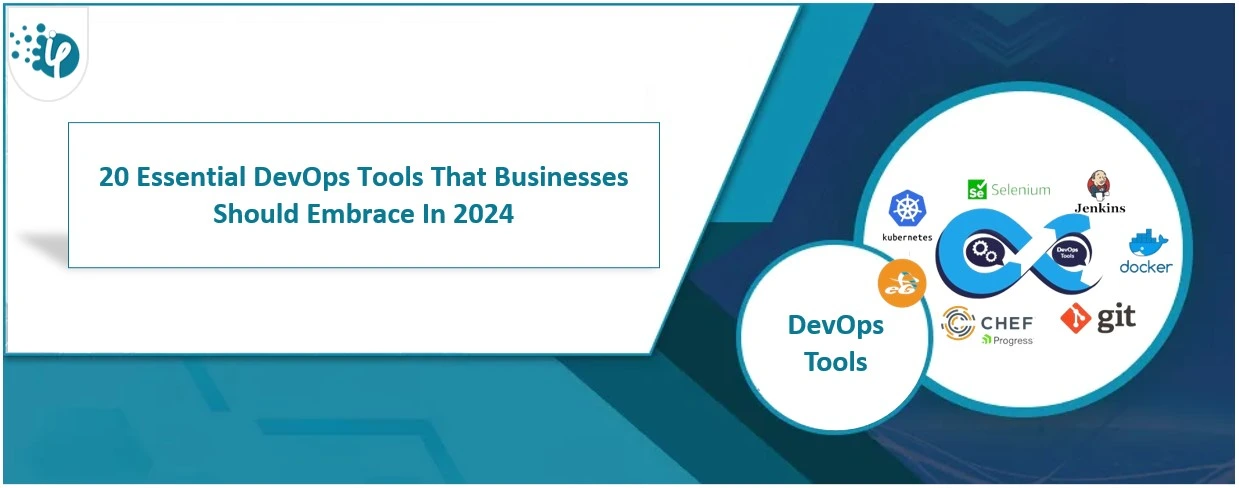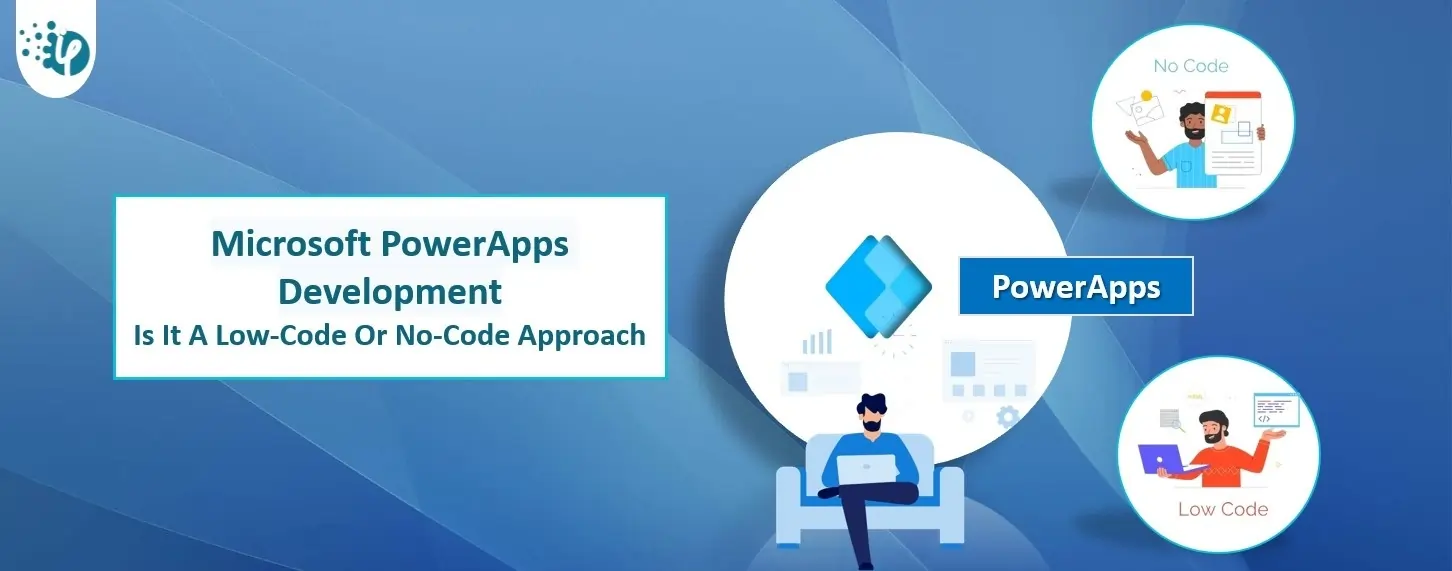What is SCRUM and AGILE?
Generally, an Agile methodology is defined as an iterative approach to the software development process. It helps in the improvement of teamwork and provides faster work delivery. With a reduced burden, we can concurrently handle the development and testing strategies and respond to the changes quickly.
SCRUM is basically an Agile process that aims to deliver business value in a short time. It is a fast, flexible, and adaptable framework that is focused on continuous improvement of work.
To talk about the benefits one can find with SCRUM are:
-
Fine-quality products
-
Reduced time for the product to market
-
Increase in Productivity
-
Satisfied stakeholders
-
Improvement in the teamwork strategy
-
Happier employees and many more.
SCRUM workflow
In a SCRUM process, three categories play a crucial role. They are the Product Owner, SCRUM team, and SCRUM master. To get the best out of it, these three roles have to work with the same vision and are required to be on the same track.
Importance of SCRUM roles
Every role in the SCRUM process has its own responsibilities. The SCRUM Master and Product Owner would together and collaborate during the whole SDLC process. The main role of the SCRUM master is to lead the team of developers and share project updates with the Product owner. On the other hand, the Product Owner will handle Product Backlog management and focus on gaining the business value. While the role of the development team would be to deliver the work through the help of Sprints, covering all the phases such as planning, designing, development, and testing.
What are the SCRUM Events?
In general, a SCRUM process would include the following events:
-
The Sprint
-
Planning of a Sprint
-
Daily SCRUM
-
Review process
-
Sprint Retrospective
The following figure clearly depicts the SCRUM process of software project development.
Let us try to understand the workflow of the SCRUM framework in 5 steps.
1. Creating Product Backlog
A Product Backlog is nothing but a list having features that need to be implemented during the process of development. Every item is organized according to the priority and is referred as a user story. Each story is allotted with a unique ID and has the following format of description.
ID - As a [User Role], I want to [feature body], so that [User profit]
Example:
A-001 – As a Team-Lead, I want to have the task editing rights to manage the workload of the team members so that I can improve the task allocation process.
2. Sprint Planning
The primary step here is to determine the exact duration of your Sprint. A short sprint would probably help you to release your working product in the market in a very short time. With that, you can receive the feedback of your customers more frequently and start resolving their concerns about the product in time.
On the other hand, if the sprint duration is around 2-4 weeks, then the important thing to consider here is making a Sprint goal. Creating the user stories for each sprint in the product backlog and finishing those tasks with high concentration would make great sense. Proper coordination and cooperation between the stakeholder and the team members remain an essential factor here.
3. Daily Scrum Meetings and working on the Sprints.
The development process begins after organizing the user stories according to the project specifications. You can assemble the tasks based on their progress level. There are so many well-known software available in the market such as Atlassian JIRA that provides this facility.
Another significant factor to discuss in SCRUM is Daily SCRUM meetings. These meetings are scheduled for understanding the work status and progress of the on-going project. It helps to keep all team members on the same page and everyone would have an idea of the task each one is working on as well as the issues faced by each developer while working.
With JIRA, you can also create user charts to review the work progress and draw conclusions.
4. Product Increment and Sprint review
For every iteration of the product development process, a new version of the product gets built by the development team that increases the business value. And during the Sprint review, the stakeholder gets an opportunity to review the end product and could decide whether to make further changes in the product and appropriately plan the next sprint.
5. Retrospective and Next Sprint Planning
The main objective of the Retrospective discussion is to look for ways of improving the development process by examining the previous results. During the discussion, each member has to share their thoughts about the work journey and provide suggestions appropriately for further improvement. And then moving to the next sprint planning.
How Burndown chart is useful while Project development?
Time and work are essential factors for the completion of a software project. When it comes to the time factor, everyone, especially a project manager tries to keep a consistent eye on the work status and progress of the project. Therefore, collecting project data and observing the possibilities is also important. To cover this purpose, the project managers can utilize a well-known graphical representation tool called the Burndown chart. It provides astonishing features and stands to explain those aspects graphically which the words sometimes fail to make it.
Through the Burndown chart, the project manager can grasp the progress of the on-going project. On the vertical axis, you can see the pending work while on the horizontal axis, you can notice the amount of time taken for the purpose. As it is visible to everyone in the team, one can deal with issues very efficiently before it becomes a huge problem.
SCRUM Implementation software
JIRA
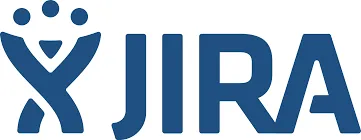
JIRA is a work management software tool that assists in tracking issues and bugs. It provides transparency in the teamwork with status visibility. Real-time performance, time tracking facility, user charts are some of the fabulous features that add to the popularity of JIRA.
Jill Stott, a Senior Agile Trainer at NextUp Solutions says about JIRA that -
"Jira is one of the recommended tools, utilized by the Scrum teams to manage their project work. It is robust, highly customizable, and integrates easily with Atlassian's other productivity tools. It provides multiple views of the work, expansive reporting, and is suitable for both small teams and scaled Agile teams."
Azure DevOps
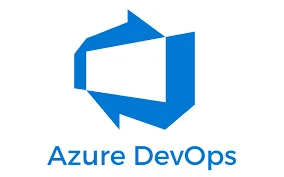
Azure DevOps is a SaaS platform from Microsoft that provides end-to-end solutions for development as well as the deployment of software. It allows us to integrate with leading tools and provides continuous value to the users.
The Co-Founder of Kasera , Mr.Rahul Mohanachandran shares his thoughts as -
"Jira and Azure DevOps are two highly suitable software for the SCRUM framework, they have built-in features to cater to the iterative nature of the SCRUM framework. Both these tools are highly effective in managing the backlog, planning sprints, and managing sprints."
nTask
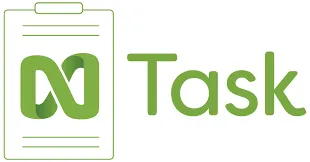
nTask is a free, simple yet powerful task-management tool that helps in planning, executing, and managing project tasks for both small and medium-sized businesses. This online collaboration platform is easy-to-use and brings all the needs in one place and helps in managing them efficiently. The features of this tool include team collaboration, making checklists, sharing files, scheduling meetings, and many more.
Jack Zmudzinski, a Senior Associate at future-processing says -
"I recommend nTask for the purpose of SCRUM implementation as it covers all the needs for the agile project management. In the past, I’ve found myself using several different tools to get the job done which has been a waste of time money.
nTask is a great piece of kit as, to begin with, it allows you to keep all of your projects in one place with the Project Portfolio. Besides, its Tasks Management feature lets me quickly monitor the progress of any given project for a pretty comprehensive overview.
In my business, managing and communicating with SCRUM teams is of paramount importance and I love the fact that nTask includes Daily Scrum Management and Team Collaboration features which really help me to effectively manage my teams.
Finally, nTask’s reporting features really are second to none and save me a shed load of precious time.
Honestly, if you Google SCRUM tools, you’ll be hit with a million different products - some are good and some are not. In my opinion, nTask is really all you need for effective SCRUM implementation."
Searching for Reliable Custom Software Development Company? Contact Now
Trello
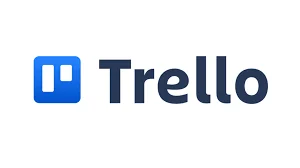
Trello is a flexible and easy-to-use tool that allows to organize your project into boards and provides clear details about the process, like who is working on it, how much it has done, etc. It helps in tracking the project activities.
Zoho Sprints
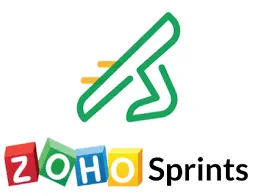
Zoho Sprints is a remarkable tool used for Agile project management. With this, the SCRUM team can analyze, track, and iterate their project-related tasks in sprints.
Being a clutter-free agile tool, Zoho Sprint lets you deliver great products on time with project transparency and team feed updates. Their personalized Scrum Board is a snapshot of where the team stands at any point in time.
Zepel
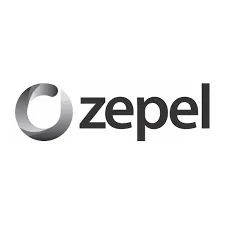
Zepel is one of the incredible project management tools that is designed for SCRUM teams to effortlessly plan, track, and ship quality software. It helps with cross-team collaboration, planning features, and tracking the progress of the project.
Zepel is built for simplicity as all you have to do is right-click to add a user story to a Sprint. It lets you plan features, collaborates across disciplines, and build great software together from wherever you are. With their hierarchical view and document-based interface, you'll spend less time in pre sprint meetings. /p>
Rally
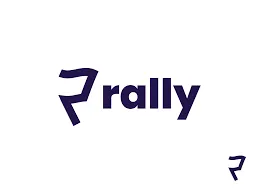
Rally is a flexible and easy-to-use tool designed for project management. It allows us to track every single phase of the development iterations and the releases. Not just these, it helps in mapping the defects with the user stories. The best part of Rally is that it provides unlimited time for five projects and ten users can utilize it for free.
Rally has a similar capability to Jira. It has a lot of features and can be highly customized to meet your teams' specific needs. In my opinion, it isn't quite as user-friendly as Jira but is still an excellent tool to manage Agile work.
Aha

Aha is a web-based roadmap software that is mostly adopted by marketing teams and product managers. It enables them to define ideas, prioritize their project work and helps to keep track of progress. With this tool, the user can easily customize the workflow and can coordinate with the stakeholder directly.
Aha! is intended for upstream Product Management work. It has wonderful visual tools to create and manage product strategies, roadmaps, and backlog items. People often pair this tool with another Agile Management System to have the capability to manage work from end-to-end.
LeanKit

LeanKit is a standard Kanban app that provides support for Agile methodologies, and lean. It has ample features that help in visualizing the workflow and provides powerful collaboration capabilities.
SwiftKanban
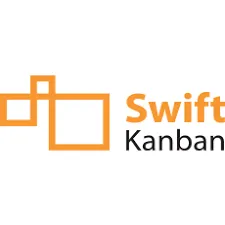
SwiftKanban is a tremendous Kanban software that provides workflow visualization with its rich features. It provides support for agile and lean management and helps in enhancing team productivity. The features of SwiftKanban include lead cycle time, workflow efficiency, adjacency matrix, blocking time analysis, throughput, etc.
Jill Stott, a Senior Agile Trainer adds in his statement that -
"Trello, LeanKit, SwiftKanban: These tools are geared towards Kanban. They are lightweight and less expensive than Rally, Jira, or Aha!. They provide intuitive ways to visualize and manage work as well as your workflow."
What are the Myths about the SCRUM?
SCRUM Can Only Be Used for Technology Team
"The biggest myth around scrum is that it can only be used for technology teams. As a media startup, we utilize the SCRUM framework to produce our content and it helps us bring teams together with different perspectives without the normal friction that I think would occur without it.
For example, in most content organizations the marketing, business development, and content people don't get along. In our organization, these three groups work hand in hand to produce, traffic and monetize our content. This would have been much harder and I think we would have been much less likely to be successful had we not used guiding principles in SCRUM to do so."
- David Waring, the CEO & Co-Founder of FitSmallBusiness
Debunk is Only Technical
"One big myth I'd like to debunk is that only technical and somewhat removed people are influential SCRUM masters. One of the skills that helped me most when working in the SCRUM master's position was my interpersonal skill set, not my technical one. I had to use my emotional intelligence to guide the team, praise and encourage when needed, solve conflicts and remove impediments, interact with people at different levels in the business, and handle criticism well. I believe individuals who possess strong emotional skills are better prepared to handle the stress of SCRUM."
- Laura Fuentes, Operator of Infinity Dish
Developers Love SCRUM
"It’s funny how many people think that developers love SCRUM. A typical response you’d get from an engineer is, "SCRUM, my friend, is only theory whereas things like Kanban are practice." That’s often the farthest they’d go with commenting on the issue. Still, the idea is that what people typically describe as SCRUM is only an ideal framework that is never realized in full and instead takes on different forms, mixing various attributes."
- Joe Tuan, CEO at Topflightapps
SCRUM Needs More Meetings
"Some people will tell you that more meetings mean Scrum is going well but the truth is Scrum was supposed to be meeting-free except for the 5 time-boxed events (kick-off, planning, scrum status, review, and post mortem). There are no more meetings required and if your schedule is filled with bunches of short meetings it’s clear that something has gone wrong."
- Todd Ramlin, Manager of Cable Compare
Scrum Does Not Include Long Term Vision
"Scrum does not include long term vision, yields products that are a mishmash of unconnected features
Reality: Scrum works best when combined with Product Vision, product roadmap and a user story map. The interaction of long term vision and the "fail fast" learning Scrum provides yields very compelling insights into the true nature of customer problem and the trends in market demand, which can impact the product roadmap."
- Travis James Fell, Product Manager at Hypori
Executives Easily Understand Scrum
"A lot of people feel like Scrum is just Waterfall, but better. It can deliver projects faster, with you getting more for that time too. It is a one stop solution for every problem, but this is just not true. The myth itself suggests that executives need more help understanding scrum and how it works. Project managers may compare their own role with 'Scrummaster' and feel like they will be able to transition from their current role to it very easily. They may even think that the role is the same. While a lot of executives do feel better working with Scrum, projectmanagers may feel threatened as their role changes. Scrum masters are there to coach and guide, something not similar to regular project management roles."
- Andrew Roderick, CEO of Credit Repair Companies
The co-location of Teams
"In light of COVID, project teams have had to preserve through project delivery by working remotely. Although SCRUM has a lot of techniques that require the physical presence of teams to collaborate, there are many tools and resources that are available to assist in the planning of the project (such as Microsoft Planner and Smart Sheets)."
- Alexis Nicole White, PMP Contact at
Lack of Definitive Deadlines
"No project management methodology is devoid of its inherent weaknesses. SCRUM is no exception. Our biggest issue with the SCRUM framework is the typical lack of definitive deadlines as it bloats cost and causes scope creep. In our early years this was an even bigger issue when we would have fixed-priced dev projects. It has become less of an issue now that we offer an hourly rate on software development. However, the best project frameworks have definitive start and end dates and the team pushes to deliver on time and under budget. Our finance manager (and especially those of our clients) are not a huge fan of an open-ended project because that typically means an open-ended checkbook."
- Nate Nead of Principal, DEV.co
SCRUM is Often Thought about with Complex Algorithms and Data
"SCRUM is often thought about with complex algorithms and data, however it can be used for some of the simplest tasks. You just need to know how to apply it to what you are focusing on. Take your time when planning out different stages of the matrix, you don't need to rush each task just to complete it quickly, the more detailed it is, the better results you can expect."
- Daniel Foley, Director of Daniel Foley SEO
Scrum Roles are Job Titles
"Scrum roles are not job titles.
Scrum is a surprisingly flexible framework used in developing software to solve user or customer problems, especially in situations where the answer is not easily identified. Teams need to build their processes on top of the framework so that it is fit-for-purpose for that organization.
Because of all the unknowns, the scrum team – with its three roles of product owner, scrum master and development team – needs to stay flexible.
Any person in the team with the right skills can perform a particular scrum role.
An example of this is when a UX Designer is part of the development team—the role doesn’t need to be undertaken by an engineer.
Job titles are very loaded in many organisations regarding power, seniority and compensation and can create unnecessary barriers that hinder good practices. Scrum and agile work effectively when there is true collaboration and egos aren’t front and center in the team."
- Alana Fisher-Chejoski, Consulting Chief Product Officer at Brand New Directions
There are no processes in SCRUM
"We can just do what we want, there are no processes. It is the wild west. As an example, I once heard a member of a scrum team say we do not need configuration management because we are agile. They made a part – even if it was software, that was going to be used in a product, and interfaced with other components, into a manufacturing environment. Configuration management is absolutely necessary, perhaps the processes could be tweaked to better fit the working method, but not abandoned.
Management: we are adopting the scrum approach to the work. However, they make little or no attempt to change the management culture. Command and control is the antithesis of scru
- Jon Quigley from Value Transformation
SCRUM and Agile Are One and the Same
"The most common misrepresentation is that SCRUM and Agile are one and the same.
While both coming from the same idea, some of the core differences you will find between scrum and agile are that while Agile is a project management philosophy tool utilising a core set of principles or values made to create early, measurable ROI through defined, iterative delivery of product features.
Scrum is instead a specific agile method within the framework that allows you to facilitate the project you are working on, starting with an idea of what can be seen or be known."
- Shayne Sherman, CEO of Techloris
SCRUM sprint can be anything from two days to two months
"If you want to get people in the industry talking, just mention the S word. Opinions are like backsides - everybody has one! The problem only arises when people state their opinion as fact so, here is one of the most common SCRUM-MY myths:
Myth: A SCRUM sprint can be anything from two days to two months and, the SCRUM master can cancel a sprint if the Development team say that the timebox isn’t do-able.
Fact: In order to be effective, a sprint should be four weeks or less (hey, thats why we call it a sprint, not a marathon).
Shorter cycles make it much easier to plan, spot issues and make changes. In turn, this increases the focus of the team and cuts down on ‘dark work’. Essentially, this is the beauty of SCRUM in a nutshell.
With respecting to cancelling a sprint, only the product owner can do this - and only in extreme circumstances.
SCRUM is designed to make a project smooth, fast and problem free. I could list so many more myths about this - but I won’t!"
- Jack Zmudzinski, Senior Associate at Future-processing.com
There is No Documentation for SCRUM
"One of the common Scrum myths is that it doesn't require documentation. The roots of this myth go back to a time when documentation was created at a separate stage from the project implementation and was of a very structured, cumbersome nature. In practice, Scrum’s documentation approach differs from the traditional Waterfall one.
Its agile nature allows reducing the need for some documents, instead of which a backlog is used. It is a more lively and flexible product in which the collection of user stories is sorted and updated, determining the current development process. Competent backlog management is just as important as managing traditional documentation in Waterfall projects. It implies using crucial documents as specific project deliverables, which should be treated — scheduled and developed — in the same way as a code.
Another radical Scrum myth is the idea that there is no room for planning. In fact, you have to plan a lot of things in Scrum to achieve optimal efficiency. It is just done in a different manner. If the Waterfall approach planning occurs in the first stages of work, then in Scrum, it happens continuously throughout the entire development cycle. This peculiarity stems from the constant changes in plans with agile methodologies, which forces employees to focus on the activity of planning, and not on the plan itself.
Scrum planning begins with a Sprint Planning meeting, where requirements and goals are discussed by everyone involved. Besides, each Scrum event has the planning as part of its process and expresses it through the Product Backlog, Sprint Backlog, and during the Sprint Retrospective.
Thus, because Scrum's plan is presented as a shared understanding, not detailed descriptions in the documented form, the erroneous belief of no place for planning in Scrum has settled."
- Maxim Ivanov, CEO at Aimprosoft
"One of the biggest myths about SCRUM is that there is no documentation, which makes it difficult to manage projects and look into details of who’s doing what and how. The truth is that all SCRUM projects have a nice product backlog, which can tell you just as much about all the necessary details as a project document of some other sort."
- DmytroOkunyev, Founder of Chanty
"1. It’s easy – The concept of Scrum is conceptually simple and follows a very logical process – it just makes sense! However, the practical application can be challenging. Most people are very comfortable and familiar with the processes and tools aligned to the Waterfall methodology, and the Scrum framework really turns that on its head. While the benefits of Scrum are great and can drive significant positive changes, it takes discipline and substantial leadership support to make a complete Agile transformation.
2.No documentation is needed – Compared to the Waterfall Methodology, Scrum deemphasizes the importance of project documentation, but that doesn’t mean it’s not important. Quality documentation is critical to the success of a project to ensure alignment with project team members and stakeholders, as well as driving effective and efficient delivery."
- Amy Goad, Principal at Sendero
It's Process Over People
"One thing I've noticed with teams doing Scrum is that they think it's process over people. This can't be further from the truth. Just because Scrum recommends a set of principles for your team to follow doesn't make it a processes-over-people technique. In the Scrum Guide, multiple references are made to the Agile mindset which means that Scrum is definitely not a processes-over-people framework."
- Momchil, Marketing Manager at Codegiant
Conclusion
Today, we can find so many Software development companies that follow theAgile methodology for their Project developments and this is because of its impeccable benefits that help in faster delivery of work. Some people get confused between the Agile and SCRUM processes. Once you get to know the variance between Agile and SCRUM methodologies, you would probably understand that the SCRUM is one of the kinds of Agile methodologiesthat can be applied for your project development process and attain faster results.To summarize, determining project specifications, and skilfully applying the Agile strategy would give you the best results and increased business value.













